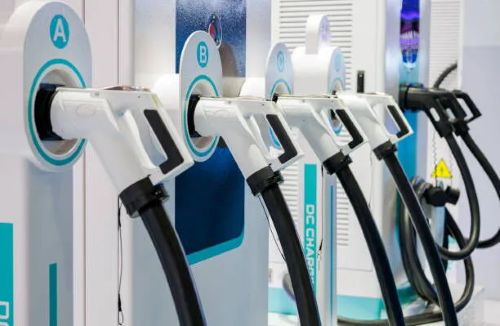


The Need for Speed in EV Charging: Understanding DC Fast Charging
As electric vehicles (EVs) become more popular, fast and efficient charging solutions are in high demand. Among them, DC fast charging (Level 3 charging) stands out as the quickest way to recharge an EV, making it essential for long-distance travel and busy commercial fleets.
DC fast chargers deliver high power directly to an EV’s battery by converting AC power from the grid into DC inside the charging station itself. This bypasses the vehicle’s slower onboard AC-to-DC conversion, enabling rapid charging.
While Level 1 chargers may take over 20 hours, and Level 2 chargers 4 to 8 hours for a full charge, DC fast chargers can recharge an EV battery to 80% in just 20 to 30 minutes—greatly reducing wait times for drivers.
Compatibility is key in DC fast charging, as connector types vary:
CCS (Combined Charging System): The leading standard in Europe and North America, offering both AC and DC charging via one port (CCS1 in North America, CCS2 in Europe).
CHAdeMO: A Japanese standard mostly phased out in Western markets, limited to about 50 kW charging speeds.
Tesla Supercharger: Tesla’s proprietary plug in North America, but supports CCS in Europe; Tesla chargers are increasingly open to other EV brands with adapters.
CCS dominates the market, while CHAdeMO is fading out.
Even if your EV supports DC fast charging, your charging speed depends on the car’s design:
Some modern EVs, like the Hyundai IONIQ 5 or Porsche Taycan, can charge up to 350 kW.
Older or smaller models may be limited to 50 or 100 kW.
Charging slows as the battery fills, typically optimized between 20% and 80% charge.
Effective battery cooling allows faster and longer charging sessions.
Note: Some EVs (e.g., Fiat 500e) do not support DC fast charging at all, so check your vehicle’s capabilities first.
DC fast charging usually costs more than AC charging due to higher installation and operating expenses and the convenience of speed. Pricing may be:
Per minute (time connected)
Per kilowatt-hour (energy used)
Session or idle fees (flat charges or penalties for overstaying)
Using a high-power charger with a low-power vehicle can lead to paying premium rates without faster charging. DC fast charging is most cost-effective for urgent needs, while daily charging is usually better suited to slower, cheaper Level 2 stations.
DC fast charging is ideal for:
Long road trips where minimizing downtime is crucial
Commercial fleets needing quick turnaround times
Emergency top-ups when battery is low
Urban areas lacking home charging options
Frequent fast charging can slightly reduce battery life, so it’s best used strategically.
Advances are underway to improve fast charging infrastructure:
Chargers with 400–500 kW outputs for next-gen EVs
On-site battery storage to ease grid demand
Vehicle-to-grid (V2G) systems enabling EVs to supply power back to the grid
Expansion of fast charger networks along highways and rural areas
DC fast charging is transforming EV refueling with unmatched speed and convenience. However, it is best used as a complement to slower Level 2 charging, reserved for trips and urgent needs rather than everyday use.
Before using DC fast charging, confirm your vehicle’s compatibility, connector type, maximum charging rate, and pricing model to optimize cost and efficiency.
By understanding when and how to use DC fast chargers, EV drivers can save valuable time and money while supporting the continued growth of electric mobility.Know more about Google SEO Directory
